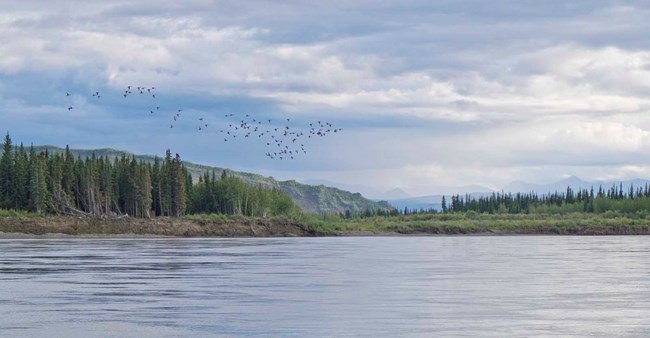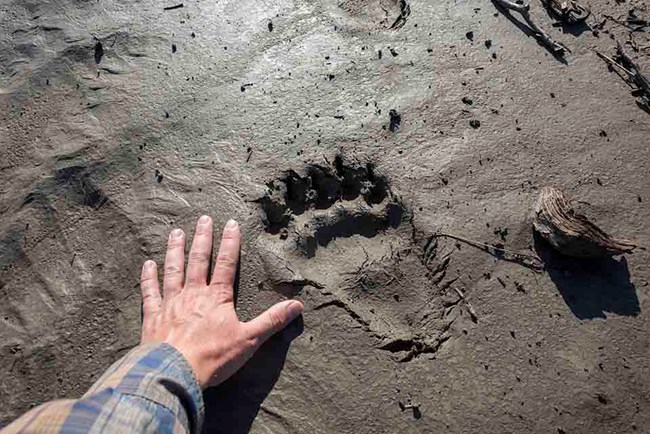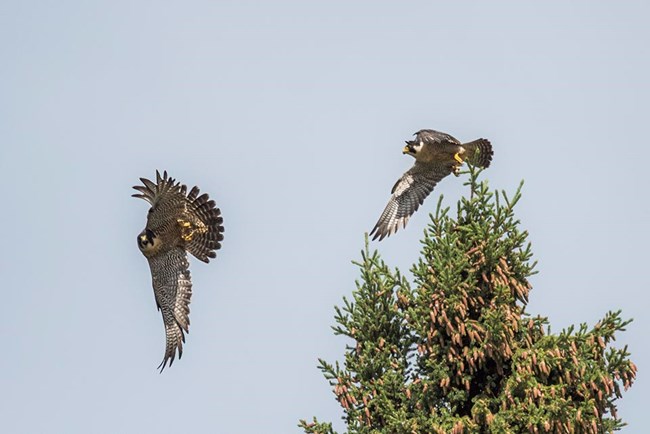
NPS/Dev Dharm Khalsa Yukon-Charley Rivers National Preserve encompasses 1 million hectares (2.5 million acres) of subarctic vegetation and complex landforms, located in eastern interior Alaska bordering the Yukon Territory of Canada. The large and historically important Yukon River and the entirety of the Charley River watershed offer an intriguing contrast in river ecosystems and provide human access to this roadless area. The Yukon River and its tributaries provide important habitat for both anadromous and resident fish. Annual runs of three Pacific salmon species help define a cycle of life important to cultural traditions thousands of years old. The Yukon River corridor within the preserve is characterized by south-facing bluffs vegetated by unique plant communities believed to represent steppelands more widespread during the Pleistocene. In contrast to the turbid and massive Yukon River, the Charley River, which flows into the Yukon, is a clearwater river whose entire watershed is contained within the preserve. 
A rich ecological assemblage of native subarctic mammals thrives in the preserve’s diverse habitats. Dall’s sheep, moose, and two distinct caribou herds are found throughout the area. Fourteen species of furbearers inhabit the preserve, of which marten and lynx are the most economically valuable. Grizzly and black bears also occur throughout the preserve. Small mammals, including mice, voles, and shrews, are important in the food web. The hardy wood frog is the lone native amphibian. A climate characterized by seasonal extremes precludes the occurrence of reptiles. 
NPS/Sean Tevebaugh At least 160 species of birds, most of them migrants, occur within the preserve. This geographic location allows for unusual observations of errant bird species from more southern and eastern temperate regions. The once-endangered American Peregrine Falcon attains one of the densest breeding populations in North America, with an estimated at 100-125 pairs breeding on Yukon River and Charley River cliffs within the preserve. This spectacular bird is one of 17 species of raptors found in the area. Yukon-Charley Rivers National Preserve contains important inland freshwater resources including the entire 0.44 million hectare (1.1 million acre) Charley River watershed. The preserve’s enabling legislation defined the foremost purpose to maintain the environmental integrity of the entire Charley River basin…for public benefit and scientific study. Because of its value as a virtually undisturbed free-flowing river, the Charley has been designated a Wild River in the National Wild and Scenic Rivers System. The Tatonduk, Nation, and Kandik rivers, which originate from Canadian headwaters, each exhibit unique ecosystems and physical characteristics. The Kandik River may exhibit one of the highest levels of primary productivity found in an interior Alaska stream. 
What's Happening in Yukon-Charley Rivers National Preserve |
Last updated: March 31, 2025
